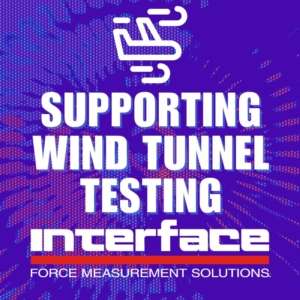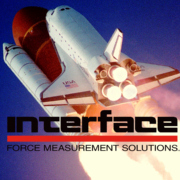Interface Supports Wind Tunnel Testing
 In the development of an airborne vehicle, like a plane or helicopter, wind tunnel systems are used to gather data across a variety of tests related to the aerodynamics of the vehicle’s design. Whether an object is stationary or mobile, wind tunnels provide insight into the effects of air as it moves over or around the test model. Interface is a supplier of measurement solutions used for aircraft and wind tunnel testing.
In the development of an airborne vehicle, like a plane or helicopter, wind tunnel systems are used to gather data across a variety of tests related to the aerodynamics of the vehicle’s design. Whether an object is stationary or mobile, wind tunnels provide insight into the effects of air as it moves over or around the test model. Interface is a supplier of measurement solutions used for aircraft and wind tunnel testing.
Wind tunnels are chambers that test small scale model versions of full systems, or in some cases, parts and components, depending on the size and capabilities of the wind tunnel. They work by allowing the engineers to control airflow within the tunnel and simulate the types of wind force that airplanes and other aircraft will experience in flight. Wind tunnels are also used for testing automobiles, bicycles, drones and space vehicles.
By taking careful measurements of the forces on the model, the engineer can predict the forces on the full-scale aircraft. And by using special diagnostic techniques, the engineer can better understand and improve the performance of the aircraft.
The process for measuring the force and how it reacts to this force works by mounting the model in the wind tunnel on a force balance or test stand. The output is a signal that is related to the forces and moments on the model. Balances can be used to measure both the lift and drag forces. The balance must be calibrated against a known value of the force before, and sometimes during, the test.
Interface’s strain gage load cells are commonly used in wind tunnel testing due to their quality, accuracy and reliability. The instrumentation requirements often depend on the application and type of test. The range of options for both load cells and instrumentation vary based on scale, use, cycle counts, and data requirements.
Instrumentation used in wind tunnel testing can be as simple as our 9325 Portable Sensor Display to a multi-channel data acquisition system. Interface analog, digital and wireless instrumentation solutions provide a range of possibilities. As is the case, wind tunnel testing is typically very sensitive. It is important to calibrate the instrumentation before each test to measurement accuracy.
Types of Wind Tunnel Tests Using Force Measurement Solutions
- Lift and drag: Load cells are used to measure the two most significant forces that impact aircraft design. Lift is the force that acts perpendicular to the direction of airflow and keeps the craft airborne. Drag is the force that acts parallel to the direction of airflow and opposes forward motion.
- Side force: This force acts perpendicular to both the direction of airflow and the lift force. It is caused by the difference in pressure between the upper and lower surfaces of the aircraft.
- Moments: Moments are the forces that act around a point. The most common moments measured in wind tunnels are the pitching moment, the yawing moment, and the rolling moment.
- Stability and control: Tests conducted to measure the stability and controllability of an aircraft are commonly using force measurement solutions for aircraft design changes or integrating new parts into an existing model.
- Performance: Particularly important with new designs, engineers use these tests to measure the simulated flight performance under maximum speed, range and fuel efficiency.
The specific tests that are conducted in a wind tunnel depend on the project requirements.
Multi-Axis Sensors for Wind Tunnel Testing Applications
In measuring the forces of a wind tunnel test, multi-axis sensors offer the perfect solution for collecting as much data as possible across every axis, giving the engineer a more complete picture on the aerodynamics of the plane. In fact, Interface has supplied multi-axis load cells for use in several wind tunnel testing applications, for OEMs, testing facilities and part makers.
We offer a variety of multi-axis options including 2, 3 and 6-axis standard and high-capacity configurations depending on testing and data requirements of the user. These sensors can precisely measure the applied force from one direction with little or no crosstalk from the force or moment. Interface products provide excellent performance and accuracy in force and torque measurement.
To match the demands of the volumes of data available using multi-axis sensors in wind tunnel testing, Interface often provides several data acquisition instrumentation solution along with our BlueDAQ software.
Wind Tunnel Test Application
A major aerospace company was developing a new airplane and needed to test their scaled model for aerodynamics in a wind tunnel, by measuring loads created by lift and drag. Interface Model 6A154 6-Axis Load Cell was mounted in the floor of the wind tunnel and connected to the scaled model by a stalk. The wind tunnel blew air over the scaled model creating lift and drag, which was measured and compared to the theoretical airplane models. The output of the 6-axis sensor was connected to the BX8-AS Interface BlueDAQ Series Data Acquisition System, which was connected via USB cable to a computer. Using this solution, the company was able to analyze the collected data and made the necessary adjustments in their design to improve the aerodynamics of their theoretical airplane models.
Interface supports wind tunnel testing and all uses of force measurement in the advancements in aeropspace.
Wind tunnel testing is critical to the aircraft industry, as well as other industries like automotive and space. Interface has been providing multi-axis sensors and strain gage load cells to industry leaders and wind tunnel operators. We understand the unique needs of this type of testing and the instrumentation options that work best with our high-accuracy sensors. We also can work to provide custom solutions, load cells for use in extreme environmental conditions. Contact us to get the right solution for your specific testing program.
Additional Resources
Aircraft Wing Fatigue App Note
Interface Airplane Static Testing Case Study
Taking Flight with Interface Solutions for Aircraft Testing
Aircraft Yoke Torque Measurement
Aircraft Screwdriver Fastening Control App Note
Interface’s Crucial Role in Vehicle and Urban Mobility Markets
Rigging Engineers Choose Interface Measurement Solutions








